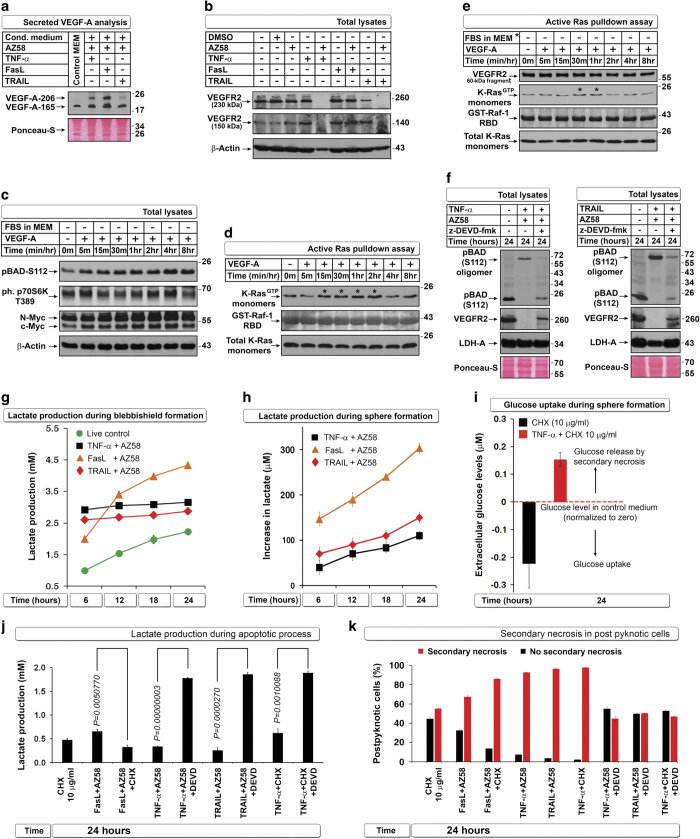Figure 5.
VEGF signaling regulates N-Myc stability and glycolysis to override secondary necrosis in blebbishields. (a) Death ligands in combination with AZ58 enhance secretion of VEGF-A isoforms detected by western blotting of conditioned media. (b) TNF-α or TRAIL but not FasL in combination with AZ58 targets VEGFR2 for degradation. (c) Recombinant VEGF-A induces pBADS112 and phospho p70S6K and upregulates N-Myc and c-Myc in serum-free conditions (serum withdrawn 2 h before and during VEGF treatment). (d and e) K-Ras is constitutively activated in RT4v6 cells and upregulated (*) by VEGF in the presence of serum (d) or in serum-free conditions (e). A VEGFR2 fragment interacts with Raf-1 (e). Note: RT4v6 cells have autocrine VEGF signaling. (f) z-DEVD-fmk rescues loss of pBADS112 and VEGFR2 induced by TNF-α or TRAIL in combination with AZ58. LDH-A: loading control. (g and h) FasL+AZ58 exhibits uninterrupted glycolysis during blebbishield formation (g) and sphere formation (h) as measured by lactate in conditioned media. (i) Glucose uptake measurement is not suitable for sphere-formation phase, as it is complicated by spillage of intracellular glucose by secondary necrosis. (j and k) CHX reduces lactate production and enhances secondary necrosis in combination with FasL+AZ58 or TNF-α; z-DEVD-fmk rescues lactate production and prevents secondary necrosis. Corresponding viability analysis is shown in Supplementary Figure S5.

